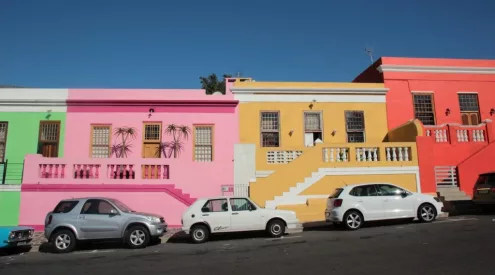Our planet is home to a number of beautiful and fascinating places to explore, from the highest mountain peaks to the deepest depths of the ocean, there will always be a new location to discover. There are, however, certain places on Earth that are best left undiscovered because of the sheer terror they inspire. Here are 10 of the most terrifying places on Earth in no particular order.
【Valley of the dolls: Inside Japan’s ‘Scarecrow Village’】
“It all seems normal… until you realize that most of those “people” aren’t people.”
[Travel Topic 1]#Dolls #Nagoro #Japan《Web》https://t.co/ZnnYmLOVj9 pic.twitter.com/8hspvyA75p
— Travel Japan (@Travel21JPN) August 2, 2019
The village of Nagoro in Japan is like any other small village or town you’re likely to come across, with one eerie exception. The village is home to a population of life-sized dolls that outnumber the human population 10:1. That means there are around 350 dolls dotted around the village, with only 27 human beings. The inanimate residents were created by local artist Tsukimi Ayano, who started making the dolls when one of her neighbours either died or moved away.
The Island of the Dolls is located in the channels of Xochimilco, south of Mexico City. During the 1950s, the owner of the island, Julián Santana Barrera, hung the dolls to appease the spirit of a drowned girl who haunted him, crying out, “I want my doll!” #WyrdWednesday pic.twitter.com/hM8dwh44is
— Sarah Nour (@SaCha1689) July 29, 2020
Sticking with the theme of inanimate residents, he ‘Island of the Dolls’, as its more commonly known is located in the channels of Xochimilco, south of the centre of Mexico City. As the name implies, Xochimilco is home to hundreds of dolls and doll parts, either hanging from trees by their necks or scattered around the island’s many bushes and fields. The exact reason as to why these dolls have been strewn across the island remains unknown. But folklore says a now-deceased resident named Julian Santa Barrera once found the body of a dead girl in a nearby canal. As a way to ward off evil spirits, Barrera started to collect and place dolls around the island. Surprisingly, Xochimilco is actually regarded as a Unesco World Heritage Site.
A good reason why i watch abandoned engineering the Beelitz-Heilstätten hospital #creepy pic.twitter.com/Z8hWRZVMW7
— A J Lee (@aj30yrdvolley) March 30, 2019
The only thing more terrifying than an abandoned hospital is an abandoned hospital that once held Adolf Hitler as a patient. This is the case with the Beelitz-Heilstätten complex, which was first opened during World War I. The hospital was initially used to treat victims of mustard gas and machine guns, and one of those patients was Adolf Hitler, who had been shot in the leg. After WW I had come to an end, the hospital fell under the control of the Nazi soldiers during World War II. Surprisingly, parts of the hospital are still being used to this day as a neurological rehabilitation center, but a majority of the complex is completely abandoned, giving the facility an eerie, post-apocalyptic look.
Mysterious hanging coffins of Sagada
One of the places famous for their hanging coffins is the municipality of Sagad in the mountain province of the Philippines. Even today, the ancient tradition of hanging coffins on rocks is practiced. pic.twitter.com/6dFkoMe4Cb
— rajiv (@rajbindas86) June 27, 2019
A typical funeral usually involves purchasing an expensive coffin for your deceased loved ones. However, residents of the small town of Sagada, Philippines have a different outlook on how they bid farewell to the departed. Instead of burying them six-feet-under, locals choose to ‘bury’ their dead in coffins attached to the sides of cliffs. The tradition dates back thousands of years and involves carving out your own coffin for when you eventually kick the bucket. Once you pass on, your family and friends then hoist you UP to your final resting place, right next to your ancestors.
The Capuchin Catacombs of Palermo, Sicily, Italy. pic.twitter.com/cZsT1Eh48w
— SERIOUSLY STRANGE (@SeriousStrange) July 22, 2017
The
When you think of terrifying places around the world, the last place you think of is the picturesque waters in Belize, a nation on the eastern coast of Central America. While the area boasts a plethora of coral life and shallow turquoise waters, it is also home to the Great Blue Hole, which measures 304 metres across and 125 metres deep. The cause of the massive hole is unknown, but divers flock to the location each year to attempt to do dive deeper into the abyss. The Great Blue Hole features underwater stalactites and stalagmites which formed during the last glacial period. According to divers brave enough to venture into the hole throughout the years, the further down you go, the clearer and more beautiful the rock formations supposedly become.
Veijo Rönkkönen Sculpture Garden – Collection of nearly 500 sculptures by the late Veijo Rönkkönen. The sculptures possess an otherworldly and at times sinister quality, with blank, sunken eyes, ghoulish grins, and, in some cases, the use of real human teeth. #Travel #Finland pic.twitter.com/Tcb4jsSLzc
— Otravel.ai (@OtravelAI) April 7, 2019
Finish artist Veijo Rönkkönen is known as one of the most famous contemporary folk artists for his time, but he also built a reputation of being quite reclusive, as he refused to showcase his sculptures in public spaces. Instead, Rönkkönen chose to display his collection of 500 concrete figures, most of which are decorated with real human teeth, in the comfort of his own back garden. This might not sound terrifying at first, but when you’ve got figures that resemble a nun lurking behind bushes or a cloaked man with long, outstretched arms, its easy to why this
Derweze, aka the door to hell, is a 70 meter wide hole in the middle of the Karakum desert in Turkmenistan
pic.twitter.com/utdB34z47w— Central Asian Beauty (@CentralAsianB) September 6, 2018
In 1971 Soviet scientists were on the hunt for a large oil deposit in Turkmenistan. While they didn’t find the oil they were looking for, they did accidentally stumble across a methane reserve while mining in the middle of the Karakum Desert. The scientists then decided to light the dangerous gas in an effort to get rid of it. This is when they figuratively, and literally, depending on how you look at it, opened ‘The door to Hell’. The location is a burning pit that has been on fire for the last 40-years.
Snake Island,
Snake island, Brazil
Officially known as Ilha de Queimada Grande is located off the coast of Sao Paulo, Brazil.The island is the only place on Earth where the feared Golden Lancehead Viper lives. The snake’s venom is so powerful that it actually melts human flesh. pic.twitter.com/7e7gFh2CUu— (@_chimiespeach_) April 7, 2019
Ilha de Queimada Grande or Snake Island is located off the coast of São Paulo, Brazil, and as the name suggests, is an island filled to the brim with some of the most venomous snakes. Studies done on the island’s population of snakes suggests there are one to five snakes per square meter. It is believed that the snakes became trapped on the island 11,000 years ago when sea levels rose and separated Snake Island from mainland Brazil. As a result, the snakes were forced to evolve and adapt to their new environment. Because there is little to no ground prey, the snakes were forced to learn how to hunt from treetops and strike at birds from the air. The snakes also evolved to have venom five-times stronger than a normal snake, as they needed to kill their prey instantly, instead of having to wait for the venom to take effect and then tracking down their prey.
Ghost city of Pripyat, Ukraine.
Which was evacuated 33 years ago after the Chernobyl explosion. The disaster was a catastrophic nuclear explosion that took place in 1986 – thousands of people died due to long-term radiation left in the air. pic.twitter.com/WJktU0VgD6— SiJoker (@jokermannnnn) May 20, 2020
Thanks to the hit HBO TV series Chernobyl, most people are already familiar with the abandoned city of However, after the devastating Chernobyl disaster in 1986, which forced all of the cities residents to immediately evacuate, the city has remained a desolate wasteland ever since. All that remains are the abandoned hospitals, office spaces, residential complexes, and of course the rundown theme park, which is now nothing more than a skeletal reminder of what used to be.
Picture: Twitter/@OtravelAI

















